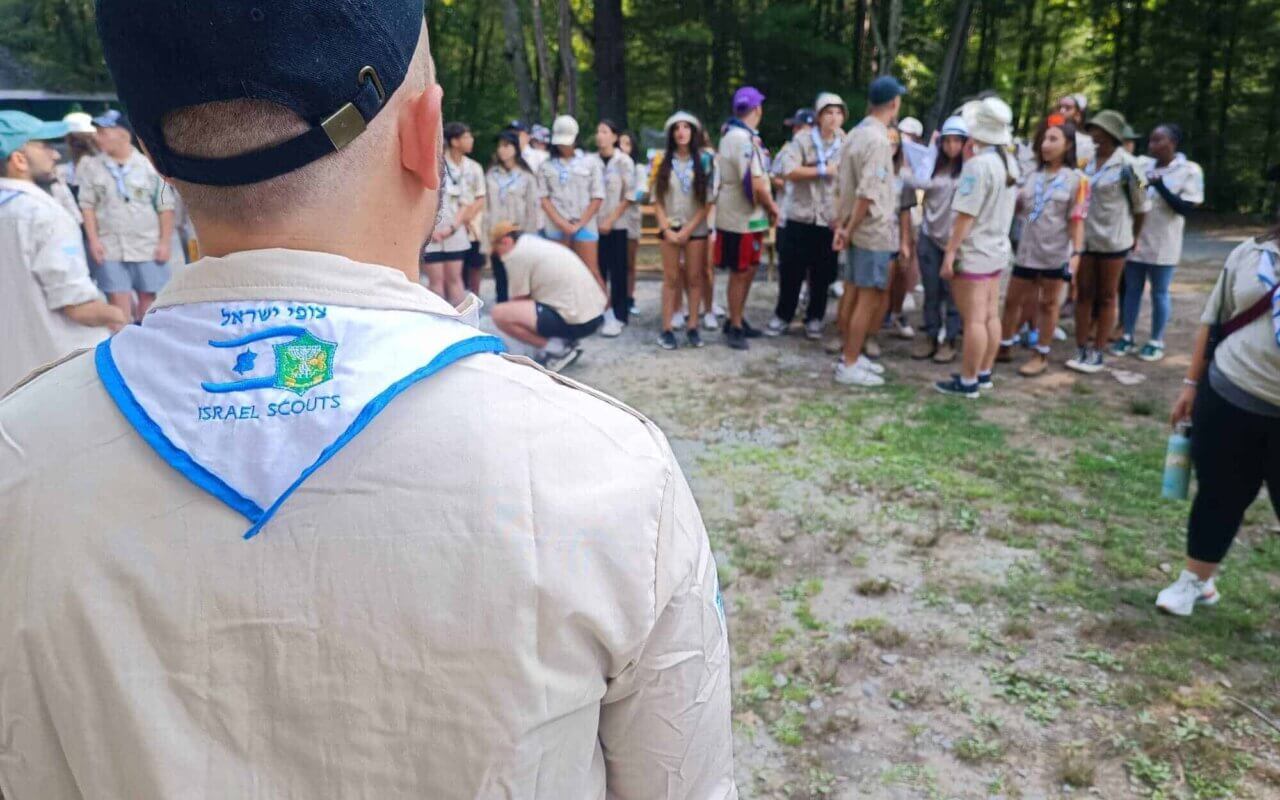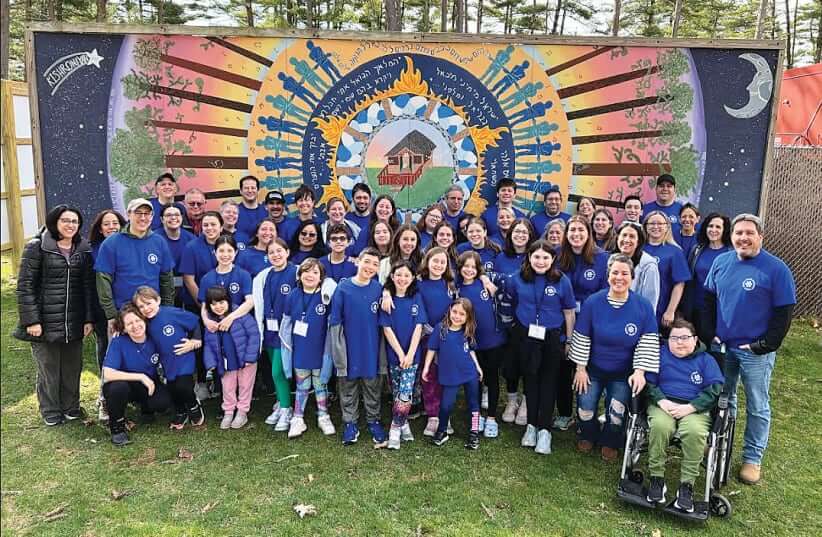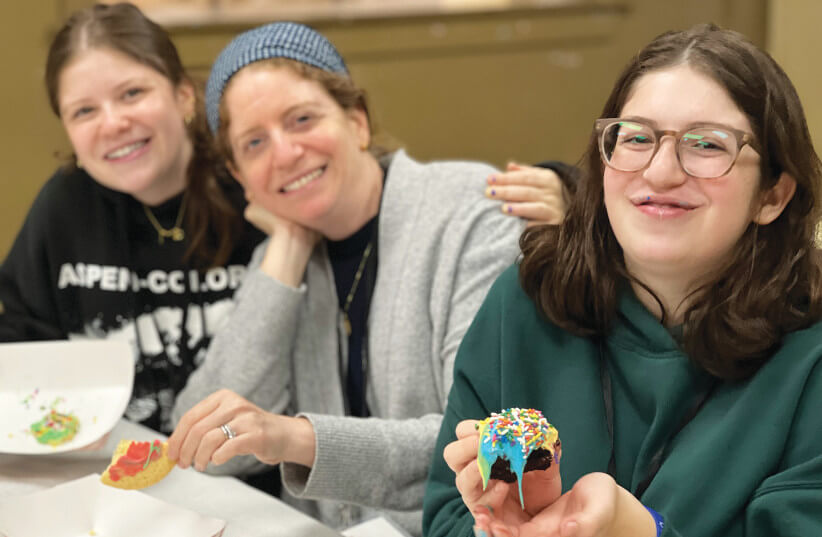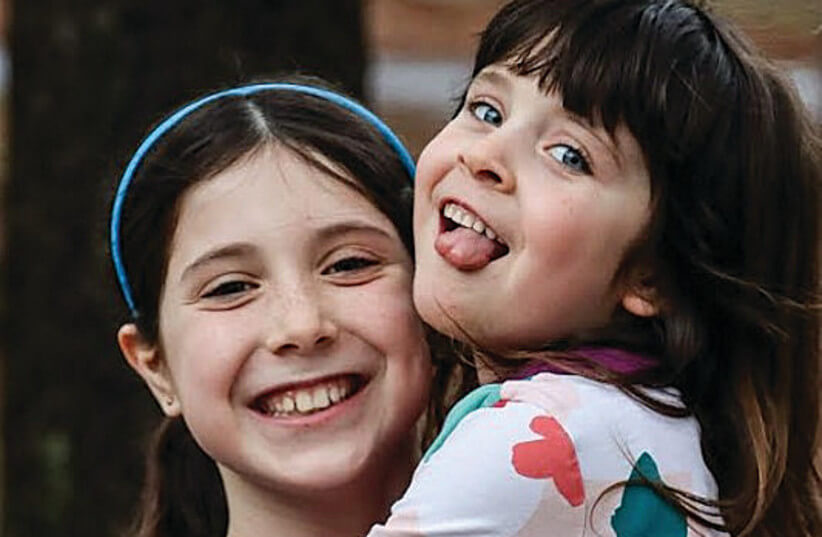The original article is published at jns.org
“Words can’t describe knowing you gave the kids the chance of a lifetime when they needed it most,” Roy Shaul-Morgan, international delegation director of Tzofim Tzabar Olami, told JNS.
“Are those trees real or painted?” one child asked. Another marveled at not one but three lakes on the premises.
The way Michael Schlank, CEO of NJY Camps, figures it, the Israeli boys who were summer camping stateside had never seen so much water or so many trees in one place before. It was an even starker contrast to what they had experienced since Oct. 7, which is why the nonprofit camping organization brought them overseas to temporarily get away from their reality back home.
“They lived on the periphery and are living in hotels, and have never been on a plane before,” Schlank told JNS.
Yaniv Biran, CEO of the North America Friends of Israel Scouts-Tzofim, told JNS that the kids could finally relax. “They could really turn off their tzeva adom,” or Red Alert app, he told JNS.
Friends of Tzofim in the United States and Canada is a youth movement for teens that involves activities, programs and travel that involve learning about and getting closer to Israel.
‘The trauma would last‘
When Schlank returned to his office on Oct. 9, he told his staff that the camping movement had to do something to help in the aftermath of the Hamas terrorist attacks at the Nova music festival and in Jewish communities in southern Israel on Oct. 7, which left 1,200 dead and thousands wounded, with 250 others kidnapped and dragged across the border into the Gaza Strip.
“When we understood the enormity, we started thinking of ways to bring kids to our camps from Israel,” he told JNS.
He and other Jewish leaders visited the Jewish state in November and saw that many Israelis wouldn’t be able to return to their homes any time soon, “and that the trauma would last longer than a month or two.” Schlank resolved to find ways to bring Israeli children who were impacted by the war to NJY camps in the United States.
NJY Camps, Tzofim, the Jewish Agency for Israel and others created Machane Am Echad (“Camp One Nation”), which brought 97 Israeli teenagers and 15 staff members to a NJY camp in Milford, Pa., from Aug. 14 to Aug. 25. (Organizers asked JNS not to cover the trip until it had concluded, citing possible security concerns.)
Twenty-five of the teens were upper-school students who came from Ofakim, Sderot and Ashkelon in the south and Kiryat Shmona up north; all have been directly impacted by the wartime situation on both fronts.
Organizers reported smiles and joy from the campers, who engaged in typical summer fare like swimming and making campfires. They also had the opportunity to visit places like Times Square in the heart of New York City to see the show “Hamilton” on Broadway, take in a Mets ball game further uptown and cool off at a waterpark.

‘We feel we are seen‘
Many of the Israeli teens opened up about their experiences—some evidently for the first time. Most of the campers and the staff witnessed the Oct. 7 attacks, and some lost relatives, sustained injuries, and have relatives and friends still being held hostage in Gaza 11 months later.
For nearly all the teens and staff, the trip was their first outside of the Jewish state, according to Schlank.
Roy Shaul-Morgan, international delegation director of Tzofim Tzabar Olami, was with the group for the 12 days of the program and told JNS about a prom held for the campers. One of them, a 16-year-old from Sderot, said it was his first time dancing since Oct. 7, Shaul told JNS.
“It was such an emotional, meaningful feeling,” he said. “Words can’t describe knowing you gave the kids the chance of a lifetime when they needed it most.”
The teen said being at the camp in New York was “like a dream” and that it made him feel that he wasn’t alone. “We feel we are seen,” he told JNS.
“The most important thing I am taking away from this experience is the friendships I have made with the other campers,” he added.
A 17-year-old from Kiryat Shmona at the northern border with Lebanon told JNS that her family did not evacuate because they own a restaurant and are feeding Israeli soldiers operating in the area. She goes to school on a kibbutz just beyond the evacuation area.
“I am not worried, but a child should not have to live with alarms, gunshots and missiles. This is not how I want to experience my youth,” she told JNS. “But we are strong and will make it through.” (She, too, said going to New York was dreamlike.)
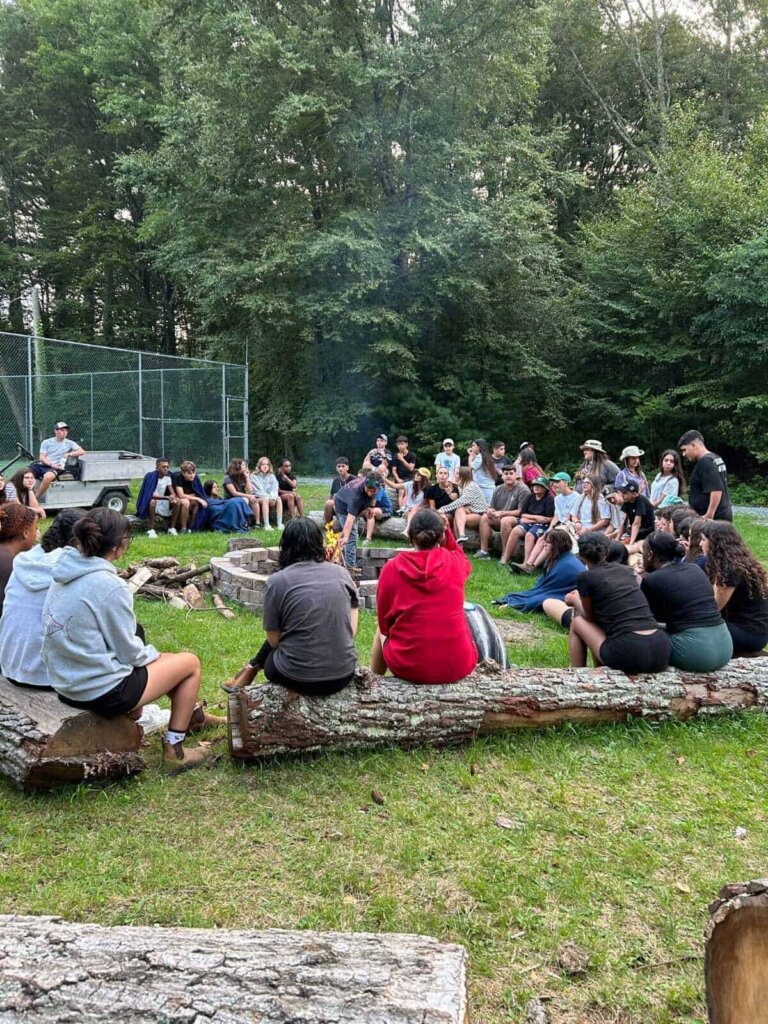
Biran, of Tzofim, hopes that the participants will serve as informal “ambassadors” from the Diaspora.
“Not everyone knows that when Israel hurts, all of us hurt,” he told JNS. “They can be the bridge.”
